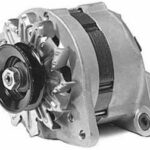If you are shopping for a new automobile, you may want to test drive one equipped with a Continuously Variable Transmission. The CVT is becoming more and more popular in today’s automobiles. The CVT offers many advantages over the traditional automatic transmission. Here is some insight into the CVT technology.
A traditional planetary transmission has multiple disc, plates, clutches and governing devices along with many other component within the transmission. The CVT has no plates, no disc and very few components. The general idea is the less parts the transmission has, the less parts that are likely to break. The key elements to a CVT are the input pulley, the output pulley and a metal or thick rubber belt. These are the only major parts the transmission houses. Although the technology of the CVT has advanced in recent years it was first introduced in 1886. According to www.edmunds.com/ownership/techcenter/articles/45104/article.html the CVT has grown in popularity over the last few years. Some of the automotive manufactures offering the CVT include Dodge, Jeep, Toyota, Nissan, Audi, Honda, Lexus, Mercedes, Mitsubishi, Saturn and Ford.
The CVT works in a very simplistic manner. When driving a vehicle equipped with a CVT you will notice a constant smooth increase in speed as you accelerate. This smooth and constant increase of speed is simply defined because there are no actual gears moving inside the transmission. As you accelerate the rpm’s do not hesitate or drop as the car shifts from one gear to the next. The belt of the CVT transmission rides in a groove between the pulleys. The first pulley is the input pulley also known as a drive pulley. It is connected to the crankshaft in the engine. The second pulley is the output pulley also known as the driven pulley, it is turned by the first pulley. The output pulley transfers its energy to the driveshaft of the vehicle. As the belt moves within the grooves of the pulley, the diameter of the one first pulley will increase. At the same time the diameter of the second pulley decreases. Causing the belt to ride higher on one pulley than on the other. As the belt moves up and down between the two pulleys the belt is kept tight to allow for throttle of speed change. Because of this basic pulley system the CVT has an infinite number of gears at any speed. Due to the technology of the CVT, the transmission never finds itself hunting for gears even when driving up a steep incline.
Not only does this transmission work to give you a smoother ride, it is also more fuel efficient. Many drivers who are more used to driving a car with a traditional automatic transmission will expect to feel a jerk or a jolt as they accelerate and the car shifts gears. When these characteristics are not felt it give the driver the perception of loss of power. However, the CVT continues to keep the engine turning constantly as the rpm’s increase, accelerating will make speed increase with no loss of power. The sound coming from the engine does not change or get louder. This may also trick some drivers into thinking there is a lack of power.
Vehicles equipped with a CVT transmission have different maintenance requirements. Most CVT’s are a closed unit transmission and should only be checked and reviewed with your local dealership. Refer to the manufacturer’s owners manual to review their maintenance schedules for that particular make and model of vehicle.
Although I have worked in the automotive field for eight years, I was very skeptical and apprehensive of owning an automobile with a CVT. However, after I test drove a 2007 Dodge Caliber, my fears had vanished. Although it took a few miles to get used to the feel of the CVT, I really enjoyed the smoothness of the ride. I left the dealership that very same afternoon as a proud owner of a new Dodge Caliber. So, the next time you are out shopping for a new car, keep the CVT in mind.
Sources:
Page Title: www.edmunds.com/ownership/techcenter/articles/45104/article.html
Page Title: auto.howstuffworks.com/cvt.htm






